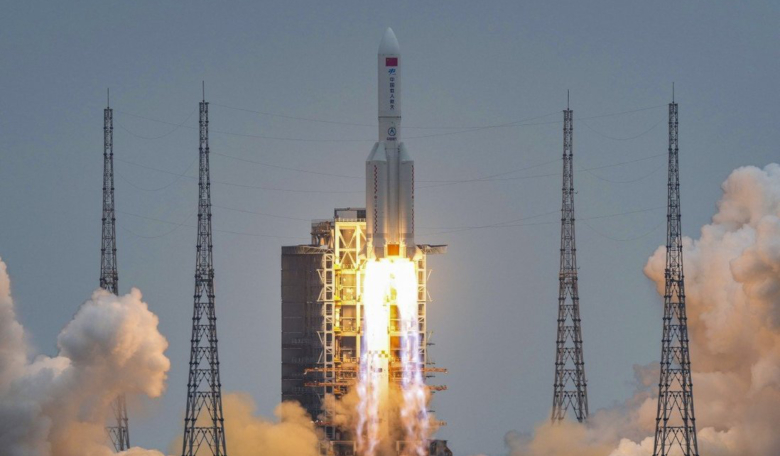Fears that the atmospheric reentry of a Chinese rocket stage that launched the first piece of the country’s first space station last week, could result in the debris hitting populated areas this weekend can be relaxed say space tracking experts, as there is only a 1 in 196.9 million chance it will hit within a half mile of any location on Earth.
Whizzing around Earth at 29,000 kilometres per hour (18000 mph), the roughly 30-metre-tall, 5-metre-diameter of China’s empty Long March 5b rocket body had caused considerable concern following reports that it will be allowed to make an uncontrolled reentry through the atmosphere around 8 May.
This was due to the Long March reaching orbital velocity – a manoeuvre not normally conducted by expendable rocket first stages. Instead most drop down within a pre-defined reentry zone.
Last year China came under criticism when it became known that the maiden flight of its Long March 5B showered debris over the Ivory Coast in Africa, prompting watchers of the reentry to label the incident as negligent.
This time around, Chinese media has already preempted concerns saying that Western reports about the potential hazards involved are "hype", as the predicted debris will likely fall somewhere in international waters.
However, some nations including the US have been keeping a close eye on it regardless. “US Space Command is aware of and tracking the location of the Chinese Long March 5B in space, but its exact entry point into the Earth’s atmosphere cannot be pinpointed until within hours of its reentry,” US Department of Defense spokesman Mike Howard said in a statement 4 May.
Russian space agency Roscosmos also issued a statement at the same time advising that its Automated Warning System on Hazardous Situations in Outer Space (ASPOS OKP) was tracking its movements.
Originally injected into an elliptical orbit, the rocket stage is moving on an inclination to the equator of about 41.5 degrees.
This means that debris should not fall further north than approximately 41.5 degrees North latitude and further south than 41.5 degrees South latitude. This still leaves a large swath of the globe, including all of Africa and Australia, and substantial areas of Asia and North and South America at risk from falling debris.
And, with a core stage seven times more massive than the Falcon 9 second stage, there is a lot of material to burn up in the atmosphere.
As past missions have shown however, there is always the possibility that resistant materials and metals with high melting points could survive and hit the ground.
But say space tracking experts, despite a huge reentry window for the rocket, there is no need for alarm as ongoing predictions have helped narrow down its likelihood of crashing somewhere populated.
“We did math today regarding the #LongMarch. The chance that this rocket will drop near you is REALLY small. We figured that there is a 1 in 196.9 million (or 0.000000005%) “ chance it will hit within a half mile of any location on the earth. Please keep calm and carry on,” said the Space-Track organisation via Twitter.











